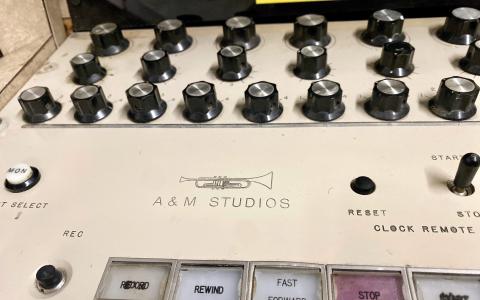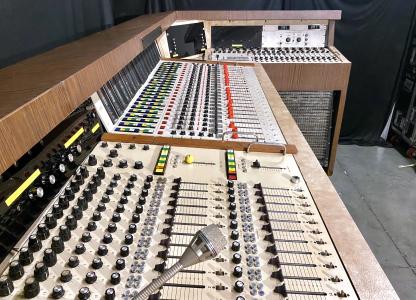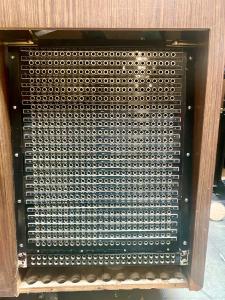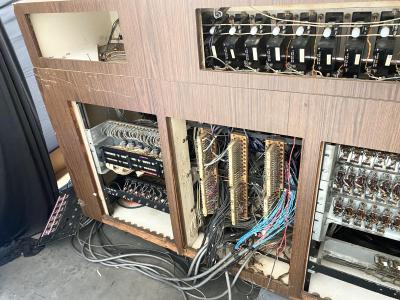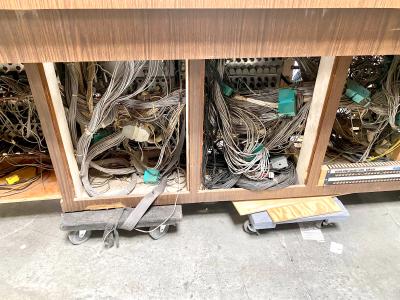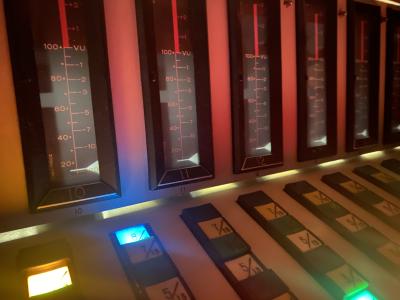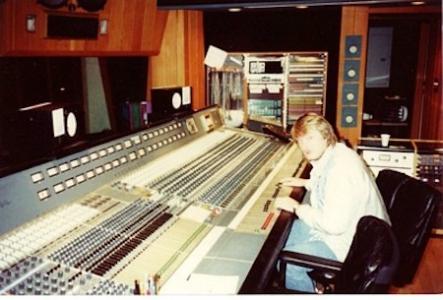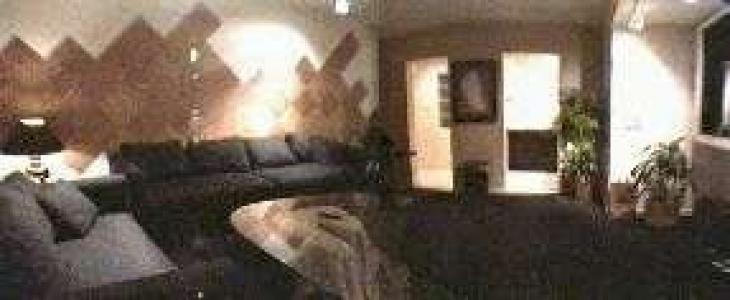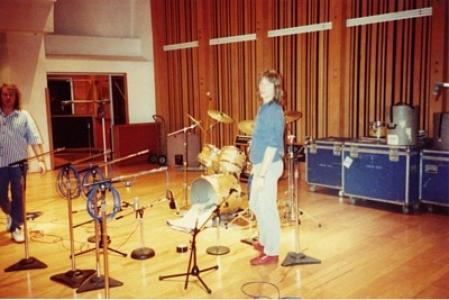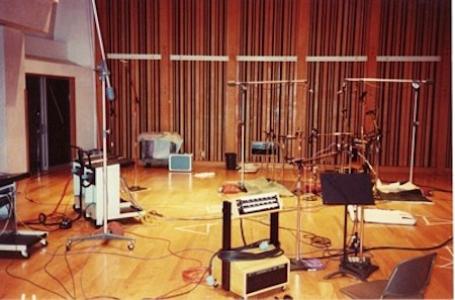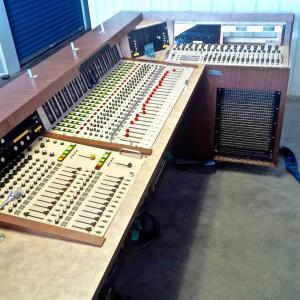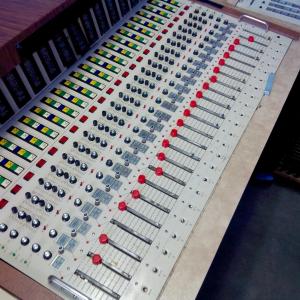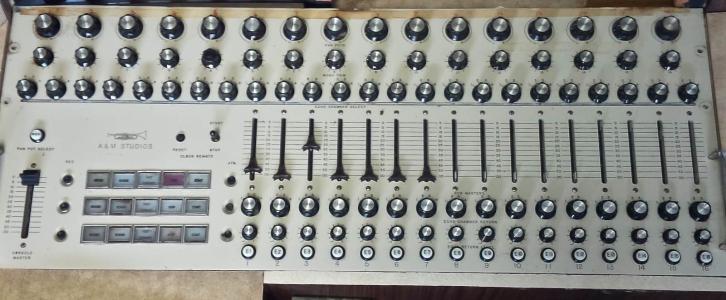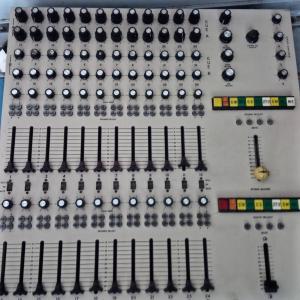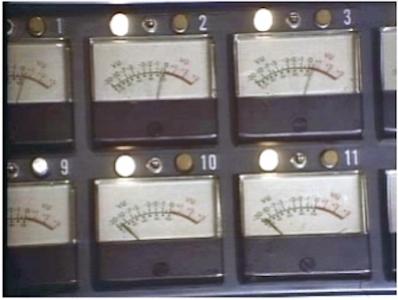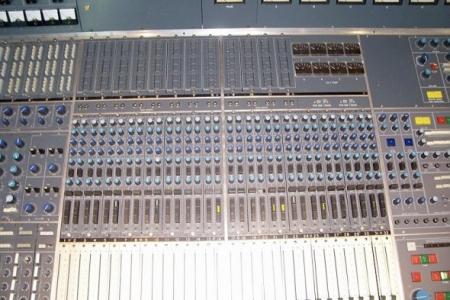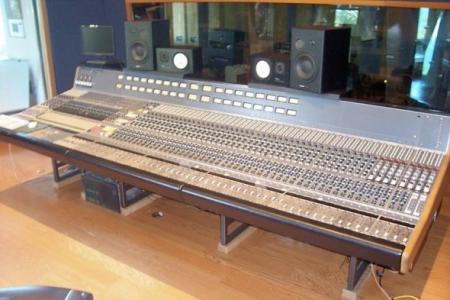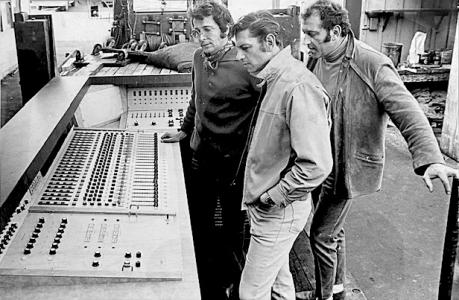
A&M RECORDS STUDIO A
A&M RECORDS STUDIO A HISTORY

Herb Alpert, Larry Levine and Howard Holzer with the original Studio A Console.
Studio A was the largest room at 48,000 cubic feet. It had tracking, overdub and remixing capabilities. Among the artist recordings to come from Studio A are:
* "We Are the World" by USA for Africa
* Herb Alpert remixed his Fandango album and recorded Blow Your Own Horn
* Joan Baez's Diamonds and Rust album
* Carpenters self-titled album, "Don't Cry For Me Argentina", "Calling Occupants Of Interplanetary Craft"
* Captain & Tennille's Love Will Keep Us Together
* The Tubes Young & Rich
* Jeffrey Osborne's self-titled album
* Lani Hall's Es Facil Amar album was mixed in Studio A
* Stan Getz's Apasionado
* Billy Preston's vocal on "Nothing From Nothing" and Hammond B3 on The Kids and Me
* Burt Bacharach with orchestra for his own records as well as those by Dionne Warwick and Glen Campbell
* Henry Mancini used Studio A for his large ensemble work
* Instruments on Barbra Streisand's Butterfly
* Hoyt Axton recorded in "A" for many of his projects
According to the defunct A&M Studios web site, artists entered Studio A through its control room. The control room was about 19' by 22'. (All dimensions are approximations because the studio complex contained many walls that were set on angles.) On the left side of the control room was a vocal ISO booth. Two more ISO booths were on the right side of the studio. One was about 16' by 20' and the other was 20' by 26'. The control room windows looked out into the main recording room with its 20' ceiling. The main area was about 38' by 39'.
Studio A was updated in 1986 by Continental Studio Builders (CSB).
HOWARD HOLZER CONSOLE
STUDIO A
AIR MONTSERRAT CONSOLE
This console was one of the last three designed by Rupert Neve for the Neve Company. Producer Sir George Martin developed the specifications for the desks that were to be used in Air Studios. Engineer Geoff Emerick also added his specifications. This console got its name because it was installed in the Air Montserrat Studios. While at Air, it was used to record The Police albums Ghost in the Machine and Synchronicity.
In 1987, A&M Records bought the console.
The console featured 52 channels with:
40 Remote Preamps in a 4 x 10 channel system
44 x 31106 Eq and 41-44 have mic preamps inside the 31106 case
8 x 1081
4 x 32088 Eq's
44 x 32436 Aux Routing Modules
8 x 1974 Routing modules
Flying Faders
TT Patch Bay
remote-controlled microphone preamps and toroidal transformers,
integrated circuits
STUDIO A EQUIPMENT
|
CONSOLE: Custom Neve Model 4972 52/24/32 TAPE MACHINES: Two Studer A800 Multitracks MIXDOWN/REFERENCE: A&M proprietary A-to-D and D-to-A MAIN MONITORS: Custom A&M/Van Haaff systems with NEAR FIELD MONITORING: Yamaha NS-10Ms |
OUTBOARD EQUIPMENT: Compressor/Limiter: Fairchild 670 Equalizers: Pultec EQP-1A3, EQP-1A and EQH-2 Reverb/Effects: Eventide H-3500 Delays/Effects: AMS DMX Gates/Proc.: Drawmer DS-201 gates |

